Talks by Elizabeth A Wueste
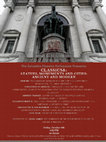
Columbia Classics Colloquium Classics& Panel Series "Statues, Monuments and Cities: Ancient and M... more Columbia Classics Colloquium Classics& Panel Series "Statues, Monuments and Cities: Ancient and Modern" This summer, an iconoclastic movement fueled by escalating racial tensions in the US and abroad swept over the globe. The power of this particular inflection point has brought to the forefront the various realities of what monuments do and mean in both space and time, and has included questions of how identity, heritage, representation, and politics are negotiated, confirmed, problematized, and even rewritten for both individuals and communities through the physical presence of the monumentalized object in cities and public spaces. In the first panel of the Classics& series for Fall 2020, we will discuss how monuments shape and influence communities (even academic communities) in time and space, and conversely how communities shape and influence monuments throughout time and space. Since monuments have been a key point of contention globally, and have such a critical (and problematic) role in the study of Greek and Roman antiquity (as well as the Ancient Mediterranean more broadly), this panel seems both timely and important. In particular, we will focus the conversation around how the materiality and functionality of monuments can effect, (re)interpret and (re)define the socio-cultural and political landscapes they occupy, revealing ephemeral features and semantic ranges to monuments that extend beyond and, perhaps, even supersede their physical structures and strictures (including processes of placement and construction, external development or decline, removal, defacement, and destruction). In order to treat the topic with greater depth and breadth, as well as to build interdisciplinary bridges, we will include scholars and practitioners inside and outside of the field of Classics who write about, teach, and/or advocate for monuments. Further, in an effort to strengthen the relationship between the Columbia community and New York City, we will host executive director of women.nyc Faye Penn. She oversees the public art campaign SheBuiltNYC (website), which "honors pioneering women by installing monuments [in NYC] that celebrate their extraordinary contributions to the city and beyond."
Proportion Distortion: The Human Form, Display Context, and Visual Refinements in Roman Sculpture
While the original display context of Roman sculpture is difficult to establish given insufficien... more While the original display context of Roman sculpture is difficult to establish given insufficient archaeological records and the likelihood of reuse, we are increasingly able to recognize slight proportional adjustments thus allowing us to reconstruct the ideal viewing angle and demonstrate that Roman sculptors often considered the intended context. I submit that the sculpted body’s proportions were influenced by the height of display. While this practice is easily recognizable in the sculptural panels of Aphrodisias’ Sebasteion, testing the correlation between body proportions and display height is problematic as it requires exact measurements of each body part, which are never published. I welcome feedback on the proposed theory as well as methodology.

Revealing or Concealing Religion: Identifying “Christian” Versus “non-Christian” Material in Late Roman Honorific Epigraphy, Monuments, and Portrait Sculpture
In addition to its pronounced religious effects, the advent of Christianity produced far-reaching... more In addition to its pronounced religious effects, the advent of Christianity produced far-reaching and dramatic consequences for the Roman Empire politically, socially, administratively, and culturally. This paper examines what effects Christianity may have produced in the archaeological and art historical record of the third through fifth centuries CE, and whether or not “Christian” versus “non-Christian” material can be positively identified. The evidence surveyed includes the elite display of honorific epigraphy, monuments, and portrait sculpture, from primarily Asia Minor. While the literary and written historical record are identified easily enough as Christian or non-Christian, the transition to Christianity in the physical and material record is far more gradual, subtle, and nebulous. Granted, some epigraphy and monumental art from this early period of Christianity openly and unambiguously advertises their patrons’ religious affiliations, the greater majority makes use of far more enigmatic cues.
Previous work has tended to concentrate on the expressions of openly self-identified Christians, such as the imperial family or early congregations and their church structures or mortuary material. This paper’s collection of data focuses instead on the local elite, whose ties to both the imperial administration and their local communities could have provided potentially conflicting incentives to openly advertise their religious beliefs. Indeed, the evidence finds that both the epigraphic and visual language used in the monuments provides, at best, a highly coded and covert statement of religion, or, at worst, no indication at all. Despite the public conversion of the imperial family to Christianity, provincial elites were apparently hesitant to advertise both their paganism and their Christianity in public venues. The nuanced visual language conveyed by these monuments gives further proof that the religious environment of this time period was culturally contentious and either affiliation was socially costly.

Sharing the Wealth: Common Motifs in Third Style Wall Painting, Jewelry, and Metalware
In contrast to August Mau’s well established “four styles” of Pompeiian wall painting, whereby wa... more In contrast to August Mau’s well established “four styles” of Pompeiian wall painting, whereby wall paintings are assigned a direct place within a chronological evolution, I propose that Roman wall painting should be studied on the basis of its content, not style. The third style, with its fanciful whimsy, vegetal scrolls, spirals, tiny medallions, and attenuated miniaturist scale, appears markedly out of place in Mau’s chronology as it seems to have no evolutionary predecessor, as Vitruvius so famously points out. I propose that much of the attenuated whimsy and delicacy of the third style are traceable motifs within ancient jewelry and metalwork, both of which enjoy longer histories than that of Roman interior wall painting. Features which are specifically associated with the third style, and cited as examples of its peculiarity, are traceable in jewelry. Thin acroterial spirals bear an uncanny resemblance to gold filigree work in diadems and earrings. Tiny portraits suspended in the middle of a wall look like cameo portraits on medallions, coins, and signet rings. Miniature friezes with curiously simple, single ground compositions find a similar scale and compositional correlate in jewelry. Pendants and disc-shaped jewels dangling from columns parallel dangling shapes in earrings and necklaces. And finally, vivid colors like blues and greens which dot the walls and columns of third style paintings recall inset jewels and inlaid stones from the jewelry tradition. Beyond jewelry, contemporary Roman metalwork also preserves similar motifs of Roman wall painting, including thin columns and urn shapes found on metal handles and utensils. Thus, while third style wall painting does not seem to conform to any type of evolutionary, chronological narrative as Mau envisioned, it did not develop its decorative schemes in a vacuum, and by looking at the subject matter instead of an evolution of style, we find jewelry and metalwork to have common motifs with wall painting. It is therefore of more use to view Roman wall painting in terms of what is depicted, as opposed to how and when, as August Mau suggests, as it reveals that Roman wall painting reflects a body of content common to other mediums of Roman art.

What a Picture is Worth: The Emergence of Pictorial Narrative and a Common Culture in Greek Geometric Vase Painting
In the eighth century B.C.E., Greece entered the final stages of the Iron Age, and experienced a ... more In the eighth century B.C.E., Greece entered the final stages of the Iron Age, and experienced a cultural renaissance marked by a wider circulation of Greek pottery, an increase of wealth in graves, the establishment of colonies outside of Greece, dramatic population growth, more architectural remains, the adoption of the Phoenician alphabet, the creation of the Homeric epic, the canonization of epic and mythical stories, and eventually the creation of the polis. Using the rise of pictorial narrative in Greek Geometric vase painting as a case study, I propose that the widespread social and cultural changes of the eighth century were caused by the rise of sedentary social communities and the consequent cultural homogeneity and collective memory which followed.
A careful examination of the rise of pictorial narrative during the Protogeometric through Late Geometric periods show that the subjects depicted can be categorized into three themes: ownership, communal interaction, and myth. In a growing social community, ownership is of increasing importance as the boundaries of personal space become more compact and a market economy emerges. Likewise, communal interaction increased dramatically in the eighth century, and because of new long-standing social relationships, one was suddenly required to establish continuity between the past, present, and future. During the Iron Age, in contrast, discontinuity was the norm and conditions and locations could be expected to change every few generations. Pictorial narrative could serve as a cognitive instrument to help one both understand and remember the past in the new, less variable, and more constant society. Finally, narrative depictions of myth presuppose and require of the audience a high degree of subject familiarity, and therefore signal the rising cultural homogeneity of a stable and long-lasting social community.
Therefore, by identifying and analyzing the prevalent themes in the recently adopted medium of pictorial narrative in Geometric vase painting as a case study, we can see the innovations of eighth century Greece are a direct product of a more sedentary and stable social community and the resultant cultural homogeneity, social consciousness, and collective memory produced.
Archaeological Reports from the Field 2012: Pompeii Archaeological Research Project: Porta Stabia

From Local to Imperial: Honorific Sculpture and the Construction of Imperial Power at Aphrodisias
In understanding how the Romans were able to create and sustain such a far-reaching and expansive... more In understanding how the Romans were able to create and sustain such a far-reaching and expansive empire, it is crucial to consider how imperial power was constructed within a provincial setting. This paper examines the interactions of imperial control with the local government of Aphrodisias during the Imperial and Late Antique period as traced through its representation in honorific sculpture and epigraphy. Because of its extensive corpus of well-preserved honorific sculpture and inscriptions, in addition to its historically documented change from a civitas libera into a provincial capital, Aphrodisias is a prime location to test the aesthetic effects in sculpture of varying levels of imperial involvement with the local government. The evidence sampled includes a diachronic survey of statues and inscriptions erected to honor specific persons dating from the Republican period into the sixth century CE. In comparing the number of statues and inscriptions from Aphrodisias in different time periods, the data shows that statues wearing the civic costumes of the himation or the toga and inscriptions honoring local men for local offices are far more prevalent during the period when Aphrodisias was a civitas libera. However, after Aphrodisias became an imperial capital, honorees were far more likely to be honored for imperial offices and to wear the cuirass or the military-style chlamys cloak. Therefore, imperial and local power at Aphrodisias each had its own particular costumes that were deemed appropriate for its honorific statues: military costumes for imperial officials, and civic costumes for local ones. The costumes of the statues and the accompanying epigraphy bring to light the underlying, cultural conceptions of imperial control as primarily militaristic, while emphasizing local dominance over civic matters. The dichotomous administration of the empire, wherein the military was overseen at an empire-wide level and centrally from Rome, while civic affairs including taxes and local government were handled at the local level, has already been studied using historical sources and administrative records. However, the same ideology can be further traced through the semantics of the visual imagery of honorific sculpture. The honorific statues at Aphrodisias reflect this cultural understanding of imperial control and military might against local governance and civic administration, and also potentially reinforced and strengthened these concepts for the viewing populace.
Drafts by Elizabeth A Wueste
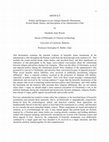
This dissertation examines the material evidence of honorific statue monuments of the administrat... more This dissertation examines the material evidence of honorific statue monuments of the administrative elite throughout the Roman world from the third through sixth centuries CE. This includes the extant portrait heads, statue bodies, and inscribed bases, and their significance as indicators of and participants in the larger socio-cultural conversation about the relationship between religion and politics during Late Antiquity. What was the effect of Christianity on local and imperial politics during this transitional period? Were members of the administrative elite pressured to convert to Christianity and advertise their conversion because of imperial pressure? What social benefits and/or liabilities were involved in publically proclaiming religious affiliation? How is material evidence involved in the projection of religious self identity, especially in public arenas and visual form? How were these visual messages communicated, understood, and received by the viewing audience? I argue that the honorific monuments of the late antique elite reveal a surprising tension between politics and Christianity, and while neither the honorands nor the honorers fully proclaim their religious affiliations, they are not entirely silent either. I argue we should adopt a more nuanced conception of Christianity's role in the political landscape during this transitional period precisely because ambiguity, religious fluidity, and a broad, if vague, public appeal was politically and socially useful. Previous scholarship has tended to isolate either the sculptures or the inscribed bases of honorific monuments and examine them separately, that is, art historically or epigraphically, respectively. Removed from the archaeological, spatial, and historical contexts, these approaches are fundamentally flawed in that they ignore at least half of the monuments as a whole, and therefore do not consider the most immediate display context. When components are found and studied in isolation, as is overwhelmingly the case, it may indeed appear that portrait heads are divinely inspired by a Christian god, statue bodies are wearing priestly costumes and holding attributes loaded with religious meaning, and honorific inscriptions are overrun with Christian crosses and direct appeals to God. However, the components of honorific monuments were deliberately combined by a single agent and were intended to be received as a single statement, and thus should be similarly studied together for full comprehension.
Papers by Elizabeth A Wueste

Politics and Religion in Late Antique Honorific Monuments: Portrait Heads, Statues, and Inscriptions of the Administrative Elite
Author(s): Wueste, Elizabeth Wueste | Advisor(s): Hallett, Christopher H | Abstract: This dissert... more Author(s): Wueste, Elizabeth Wueste | Advisor(s): Hallett, Christopher H | Abstract: This dissertation examines the material evidence of honorific statue monuments of the administrative elite throughout the Roman world from the third through sixth centuries CE. This includes the extant portrait heads, statue bodies, and inscribed bases, and their significance as indicators of and participants in the larger socio-cultural conversation about the relationship between religion and politics during Late Antiquity. What was the effect of Christianity on local and imperial politics during this transitional period? Were members of the administrative elite pressured to convert to Christianity and advertise their conversion because of imperial pressure? What social benefits and/or liabilities were involved in publically proclaiming religious affiliation? How is material evidence involved in the projection of religious self identity, especially in public arenas and visual form? How were these visual messages communicated, understood, and received by the viewing audience? I argue that the honorific monuments of the late antique elite reveal a surprising tension between politics and Christianity, and while neither the honorands nor the honorers fully proclaim their religious affiliations, they are not entirely silent either. I argue we should adopt a more nuanced conception of Christianity’s role in the political landscape during this transitional period precisely because ambiguity, religious fluidity, and a broad, if vague, public appeal was politically and socially useful. Previous scholarship has tended to isolate either the sculptures or the inscribed bases of honorific monuments and examine them separately, that is, art historically or epigraphically, respectively. Removed from the archaeological, spatial, and historical contexts, these approaches are fundamentally flawed in that they ignore at least half of the monuments as a whole, and therefore do not consider the most immediate display context. When components are found and studied in isolation, as is overwhelmingly the case, it may indeed appear that portrait heads are divinely inspired by a Christian god, statue bodies are wearing priestly costumes and holding attributes loaded with religious meaning, and honorific inscriptions are overrun with Christian crosses and direct appeals to God. However, the components of honorific monuments were deliberately combined by a single agent and were intended to be received as a single statement, and thus should be similarly studied together for full comprehension. This project draws its dataset of portrait heads, statue bodies, and inscribed bases from the excellent database of the Last Statues of Antiquity project, directed by R.R.R. Smith and Bryan Ward-Perkins at Oxford University. My dataset includes evidence from across the Roman world, dating from 284 to 550 CE. This chronological range encompasses the primary core of the late antique statue habit. In order to more closely study the interactions between politics and religion, the identity of the honorands has been restricted to isolate the main players in late antique politics. Therefore, monuments honoring women, athletes, deities, personifications, and heroes, emperors, and the imperial family have been excluded. My examination of the religious and political imperatives communicated by late antique honorific monuments is divided into three sections. In the first section, I examine the physical evidence independently by component: portrait heads (Chapter II), statue bodies (III), and inscribed bases (IV). This is appropriate as they are most often found alone and detached from the other parts of the honorific monument, and very few of them can be positively and reliably reattached to their constituent components. While similar studies have already been conducted on portraits and bodies, the compilation of the honorific inscriptions from this period is novel, and has yielded surprising insights into late antique administration, linguistics, and social structure. In the second section, I examine the only six monuments Empire-wide that can be reliably reconstructed with head, body, and base as test cases against the much larger corpus of disassembled pieces (V). The combination of complementary and contrasting identities, the mix of new and reused materials, and the varied historical and social contexts they represent produce complex and surprising composites. In the last section, I extend the results of the six test cases to the larger body of disarticulated elements in order that they might be understood and examined as a cohesive body of evidence, within their literary, archaeological, and especially historical and religious contexts (VI). This dissertation reaches three main conclusions: 1) while the disparate components of honorific monuments are almost always found separately, sheer numbers indicate that they were all part of the same honorific dialogue and…
Managing Multiple Conversations: The Multileveled Communication of Late Antique Honorific Monuments and Epigraphy
Maarav

Aventinus Minor Project: Remote Sensing for Archaeological Research in Rome (Italy)
Remote. Sens., 2022
This paper presents the results of a preliminary survey in a central urban area of Rome, Italy. T... more This paper presents the results of a preliminary survey in a central urban area of Rome, Italy. The results were obtained from both desktop and remote sensing surveys. The Aventinus Minor Project (AMP) is a community archaeological excavation project focusing on an understudied area in Rome with limited modern archaeological excavation: the Aventinus Minor or Little Aventine. The remote sensing (RS) anomalies revealed by the survey illustrate that this area is potentially rich in buried structures potentially correlated with ancient visible remains (i.e., the Servian Walls and Santa Balbina church). The application of RS approaches (such as NDVI, VARI, and GPR) and the creation of a GIS platform lays the foundations for a correct and georeferenced reporting of all collected data, providing a nuanced understanding of the urban archaeology in the dense topography of Rome.
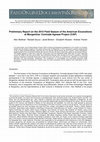
In its third season, the Contrada Agnese Project (CAP) continued archaeological investigations in... more In its third season, the Contrada Agnese Project (CAP) continued archaeological investigations in the remains of a building, located near the western margins of the ancient urban center of Morgantina. In 2015, excavations opened a larger portion of the so-called Southeast Building, extending from the trenches opened during the 2014 season. These investigations yielded evidence from construction trenches and sub-floor fills that now allow a preliminary dating of the building's phases. The building appears to have had a short life, having been built and abandoned within fewer than 75 years, beginning around the middle of the third century BCE. New architectural features were revealed by the 2015 excavations, including columns composed of terracotta drums and a small oven set in the corner of a central room, indications of monumental decoration and food production, respectively. This combination of monumentality and small-scale production leads excavators to identify the building a...
Remote Sensing, 2020
A collaboration between the American University of Rome, the Municipality of Giove, and Soprinten... more A collaboration between the American University of Rome, the Municipality of Giove, and Soprintendenza Archeologia, Belle Arti e Paesaggio dellʼUmbria has resulted in an academic project aimed at a preliminary evaluation of a particular area along the Tiber river that straddles the border between Umbria and Lazio. Archaeological prospection methods, such as Unmanned Aerial Vehicle (UAV)-based remote sensing, ground-penetrating radar (GPR), and photogrammetry, have made it possible to better study the landscape with respect to not only the changes the area has undergone recently, but also its evolution during the Roman and Medieval periods, while keeping the main communication route represented by the Tiber river as its fulcrum.
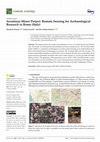
Remote Sensing, 2022
This paper presents the results of a preliminary survey in a central urban area of Rome, Italy. T... more This paper presents the results of a preliminary survey in a central urban area of Rome, Italy. The results were obtained from both desktop and remote sensing surveys. The Aventinus Minor Project (AMP) is a community archaeological excavation project focusing on an understudied area in Rome with limited modern archaeological excavation: the Aventinus Minor or Little Aventine. The remote sensing (RS) anomalies revealed by the survey illustrate that this area is potentially rich in buried structures potentially correlated with ancient visible remains (i.e., the Servian Walls and Santa Balbina church). The application of RS approaches (such as NDVI, VARI, and GPR) and the creation of a GIS platform lays the foundations for a correct and georeferenced reporting of all collected data, providing a nuanced understanding of the urban archaeology in the dense topography of Rome.
Keywords: AMP; remote sensing; GPR; NDVI; VARI; GIS; Rome
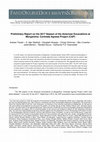
Fasti On Line Documents & Research 487, 2020
In its fifth season, the American Excavations at Morgantina: Contrada Agnese Project (CAP) contin... more In its fifth season, the American Excavations at Morgantina: Contrada Agnese Project (CAP) continued archaeological investigations inside the Southeast Building, a modestly-appointed house of Hellenistic date located near the western edge of the city. The 2017 CAP excavations resolved a number of remaining questions, particularly those concerning the phasing of the boundary walls, the layout of interior spaces in the southern and eastern parts of the building, and the nature of domestic activities at different stages of the house's occupation. This report describes the results of these excavations and proposes a new account of the building's early development. The discovery of two large rotary millstones within the building raises the possibility that the occupants of the house may have specialized in the milling of grains and prompts us to rename the building, "the House of the Two Mills".
FOLD&R Fasti On Line Documents & Research, 500, 2021
In its sixth season, the American Excavations at Morgantina: Contrada Agnese Project (CAP) contin... more In its sixth season, the American Excavations at Morgantina: Contrada Agnese Project (CAP) continued archaeological investigations inside the House of the Two Mills, a modestly-appointed house of Hellenistic date located near the western edge of the ancient city of Morgantina. This report gives a phase-by-phase summary of the significant discoveries from the 2018 excavation season, highlighting the architectural development of the building as well as evi-dence for the various activities that took place there over the course of its occupation.
Remote Sensing, 2020
A collaboration between the American University of Rome, the Municipality of Giove, and Soprinten... more A collaboration between the American University of Rome, the Municipality of Giove, and Soprintendenza Archeologia, Belle Arti e Paesaggio dell'Umbria has resulted in an academic project aimed at a preliminary evaluation of a particular area along the Tiber river that straddles the border between Umbria and Lazio. Archaeological prospection methods, such as Unmanned Aerial Vehicle (UAV)-based remote sensing, ground-penetrating radar (GPR), and photogrammetry, have made it possible to better study the landscape with respect to not only the changes the area has undergone recently, but also its evolution during the Roman and Medieval periods, while keeping the main communication route represented by the Tiber river as its fulcrum.
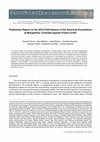
FOLD&R Fasti Online Documents & Research , 2019
In its fourth season, the American Excavations at Morgantina: Contrada Agnese Project (CAP) conti... more In its fourth season, the American Excavations at Morgantina: Contrada Agnese Project (CAP) continued archaeological investigations inside a modest house of Hellenistic date located near the western edge of the ancient urban center at Morgantina. Previous CAP excavations, conducted between 2013 and 2015, had verified the presence of an adaptive urban grid in this portion of the ancient city and, moreover, revealed much of the northern part of the building that occupied Lot 1 of insula W13/14S. Following the 2015 excavations, we came to identify this building as a modestly-appointed house that had been occupied for roughly 50 to 75 years, beginning in the second quarter of the third century BCE. The 2016 CAP season represented a significant expansion of the excavation, as four large trenches were set across the entirety of the lot, with the twin goals of resolving stratigraphic questions that remained from previous seasons and exploring the lesser-known southern area of the building. In this report we describe newly excavated evidence for the construction and use of the building as a whole, proceeding phase by phase and trench by trench.
The Materiality of Communication. eds. Emily Cole and Alice Mandell. Maarav 23.1, 2019
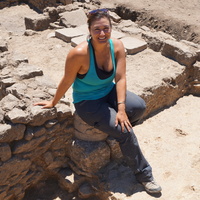
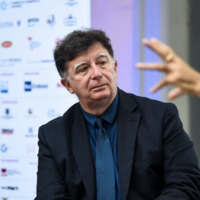






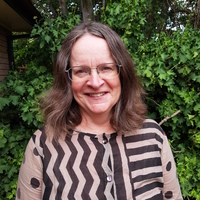


Uploads
Talks by Elizabeth A Wueste
Previous work has tended to concentrate on the expressions of openly self-identified Christians, such as the imperial family or early congregations and their church structures or mortuary material. This paper’s collection of data focuses instead on the local elite, whose ties to both the imperial administration and their local communities could have provided potentially conflicting incentives to openly advertise their religious beliefs. Indeed, the evidence finds that both the epigraphic and visual language used in the monuments provides, at best, a highly coded and covert statement of religion, or, at worst, no indication at all. Despite the public conversion of the imperial family to Christianity, provincial elites were apparently hesitant to advertise both their paganism and their Christianity in public venues. The nuanced visual language conveyed by these monuments gives further proof that the religious environment of this time period was culturally contentious and either affiliation was socially costly.
A careful examination of the rise of pictorial narrative during the Protogeometric through Late Geometric periods show that the subjects depicted can be categorized into three themes: ownership, communal interaction, and myth. In a growing social community, ownership is of increasing importance as the boundaries of personal space become more compact and a market economy emerges. Likewise, communal interaction increased dramatically in the eighth century, and because of new long-standing social relationships, one was suddenly required to establish continuity between the past, present, and future. During the Iron Age, in contrast, discontinuity was the norm and conditions and locations could be expected to change every few generations. Pictorial narrative could serve as a cognitive instrument to help one both understand and remember the past in the new, less variable, and more constant society. Finally, narrative depictions of myth presuppose and require of the audience a high degree of subject familiarity, and therefore signal the rising cultural homogeneity of a stable and long-lasting social community.
Therefore, by identifying and analyzing the prevalent themes in the recently adopted medium of pictorial narrative in Geometric vase painting as a case study, we can see the innovations of eighth century Greece are a direct product of a more sedentary and stable social community and the resultant cultural homogeneity, social consciousness, and collective memory produced.
Drafts by Elizabeth A Wueste
Papers by Elizabeth A Wueste
Keywords: AMP; remote sensing; GPR; NDVI; VARI; GIS; Rome
Previous work has tended to concentrate on the expressions of openly self-identified Christians, such as the imperial family or early congregations and their church structures or mortuary material. This paper’s collection of data focuses instead on the local elite, whose ties to both the imperial administration and their local communities could have provided potentially conflicting incentives to openly advertise their religious beliefs. Indeed, the evidence finds that both the epigraphic and visual language used in the monuments provides, at best, a highly coded and covert statement of religion, or, at worst, no indication at all. Despite the public conversion of the imperial family to Christianity, provincial elites were apparently hesitant to advertise both their paganism and their Christianity in public venues. The nuanced visual language conveyed by these monuments gives further proof that the religious environment of this time period was culturally contentious and either affiliation was socially costly.
A careful examination of the rise of pictorial narrative during the Protogeometric through Late Geometric periods show that the subjects depicted can be categorized into three themes: ownership, communal interaction, and myth. In a growing social community, ownership is of increasing importance as the boundaries of personal space become more compact and a market economy emerges. Likewise, communal interaction increased dramatically in the eighth century, and because of new long-standing social relationships, one was suddenly required to establish continuity between the past, present, and future. During the Iron Age, in contrast, discontinuity was the norm and conditions and locations could be expected to change every few generations. Pictorial narrative could serve as a cognitive instrument to help one both understand and remember the past in the new, less variable, and more constant society. Finally, narrative depictions of myth presuppose and require of the audience a high degree of subject familiarity, and therefore signal the rising cultural homogeneity of a stable and long-lasting social community.
Therefore, by identifying and analyzing the prevalent themes in the recently adopted medium of pictorial narrative in Geometric vase painting as a case study, we can see the innovations of eighth century Greece are a direct product of a more sedentary and stable social community and the resultant cultural homogeneity, social consciousness, and collective memory produced.
Keywords: AMP; remote sensing; GPR; NDVI; VARI; GIS; Rome
scrolls, belts, mappae, scepters, and fibulae. The public and political connotations of almost all of the costumes and attributes, in close consideration with the associated epigraphic evidence, reveal that the aim of the
statues was to glorify the abstract virtues of civil office, such as vigilance, justice, education, and proximity to power. The diversity of form and yet conformity of message reflect the changing aspirations, values, and public imagery of the political and social elite in late antiquity.
Aventine neighborhood, between the Circus Maximus and the Baths of Caracalla.
The November 2021 newsletter:
1. the results of the 2021 inaugural on-site season
2. student statements on their experiences from both AUR and SSS students
3. tentative plans for the 2022 season
Aventine neighborhood, between the Circus Maximus and the Baths of Caracalla.
The April 2021 newsletter:
1. describes the Project's goals;
2. introduces the Project's investigators and partners;
3. updates the community on the remote 2020 research season;
4. and details plans for the inaugural on-site 2021 season.